The online courses industry is exploding right now.
In 2015, the global e-learning market was already worth $107 billion. Estimates suggest it will balloon to $312 billion by 2025.
However, this comes with a major caveat.
While the overall e-learning industry is projected to grow substantially over the next few years, there is one particular segment of that industry that’s actually shrinking.
And it’s shrinking fast.
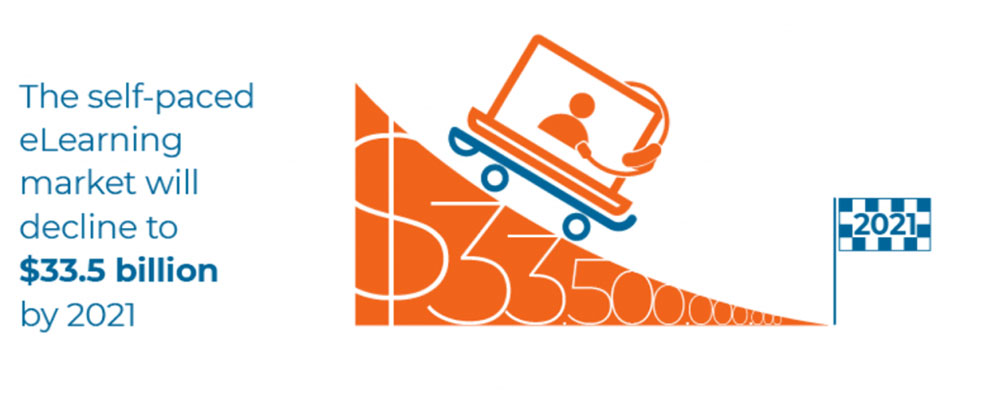
Yep, the self-paced segment of the elearning market is freefalling at a rate of 6.1% per year.
And that’s the type of online course we’re going to talk about.
Online web design courses that help you learn web design “at your own pace”. All for a modest upfront fee.
Are these types of courses worth it?

5 Reasons Web Design Courses Are NOT Worth Buying
Let’s dig into the reasons why web design courses are NOT worth buying:
- Nobody is finishing the online courses they buy
- Most online web design courses are simply inadequate
- There are way too many web design courses to choose from
- All of the information you’ll receive is available for free anyway
- Web design courses fail to keep you accountable
1) Nobody is finishing the online courses they buy

There are varying statistics floating around the interwebs that back up this claim, but they all seem to be very consistent.
In one study of MOOC’s (Massive Open Online Courses) developed by some of the top universities in the United States and the UK, people who purchased these courses showed an average completion rate of just 5-15%.
Another study showed that nearly 80% of college and university students drop out of online courses they enroll in.
And these students should be among the most dedicated since their diplomas and degrees often hinge on the completion of these courses!
Finally, in a case study most relevant to our discussion, Jeremy Osborn, academic director at Aquent Gymnasium, says that while his popular Responsive Web Design course had about 10,000 enrollments in its first year alone, only around 600 actually completed the full course.
For those counting at home, that’s a measly 6% completion rate.
To be completely fair and objective, I searched for counter-studies to show what great online course completion rates look like. The best I could find was this defense of online courses, arguing that completion rates don’t actually matter.
It was written by a gentleman who works for an online course platform…
Listen, I have no right to judge someone for telling the world why they’re passionate about their product and how people will benefit from using it. I do the same thing right here.
And like the guy who wrote this article, my job is to convince my audience that my product is both valuable and should be purchased ASAP.
I simply disagree with him.
For an article entitled Why No One Finishes An Online Course—And Why It Doesn’t Matter, and one that contains deep dives into topics like information overload, value proposition and selling transformation, the argument he makes basically boils down to this:
“Here’s the kicker: your customers may not even need to complete your course in order to get the result they want. Course completion rates, therefore, are a flawed metric for measuring the success of your online course.”
Bruh.
How exactly are you supposed to track this as a metric of success? How will you know if your customer gets everything they want form your course by only doing a quarter of it?
He continues:
Would you want a customer that completes 100% of your course and does nothing to implement what they learn? Or would you rather have a customer that completes 30% of your course, gets exactly what they need from it, and then sends you a heartfelt testimonial to tell you how much your course changed their life? The best metric you can use to measure the success of your course is the success of your customers. If your customers are getting what they want from your course, you’ve done your job.
So… your happy customers need to send you an email raving about how much they loved the first 30% of your course?
I have created a ton of content via this blog, my YouTube channel, and my podcast. Over the past 5 years, hundreds of thousands of people have seen this content.
While I am super grateful for the feedback and comments I do get, (BTW, keep sending them, I want more!) do you know what percentage of people actually take the time to send them to me?
If I had to calculate the percentage, I would run out of decimal places.
And I don’t blame them! People are busy, man. I certainly don’t have the time to comment on every piece of content I enjoy.
But how can this be a reliable metric for the value of online courses?
The far more interesting point he made is that he himself has purchased 37 online courses that he never even started.
2) Most online web design courses are simply inadequate

Unfortunately, it’s more challenging for me to present examples to back this claim up.
Mainly because I would need to buy some of these crappy web design courses myself to expose them from behind their paywalls.
But let’s take a quick look at the Web Development section of Udemy, one of the top online course platforms in the world. There are over 6,000 web design courses to choose from.
Udemy (obviously) allows users to review the courses they purchase. Here is a breakdown of those reviews:
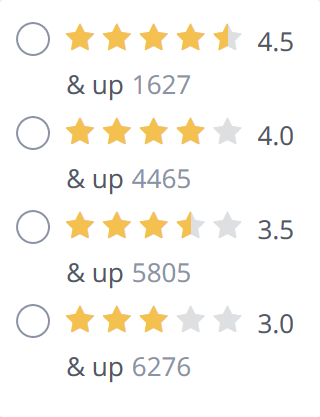
As it turns out, Udemy doesn’t allow you to sort by reviews, because naturally you’d want to keep all of the crappy courses hidden.
Plus, nobody is gonna bother buying a course with an average rating of 3.2/5 when there are thousands with a rating of 4.5/5, right?
In fact, out of those 6,200 courses, just 1,500 have an average rating of 4.5/5 or higher.
Which means you can immediately write off 75% of all web design courses on Udemy.
Udemy doesn’t even allow you to find courses that have an average rating of less than 3/5. Which means there are likely thousands more courses that are so bad they should be immediately dismissed.
And Udemy is just one of the many online course platforms available. Think of all the independent course creators on top of that!
OK, so let’s say you write off the majority of web design courses out there and filter it down to only the cream of the crop.
Now what?
3) How on earth are you supposed to choose an online web design course?
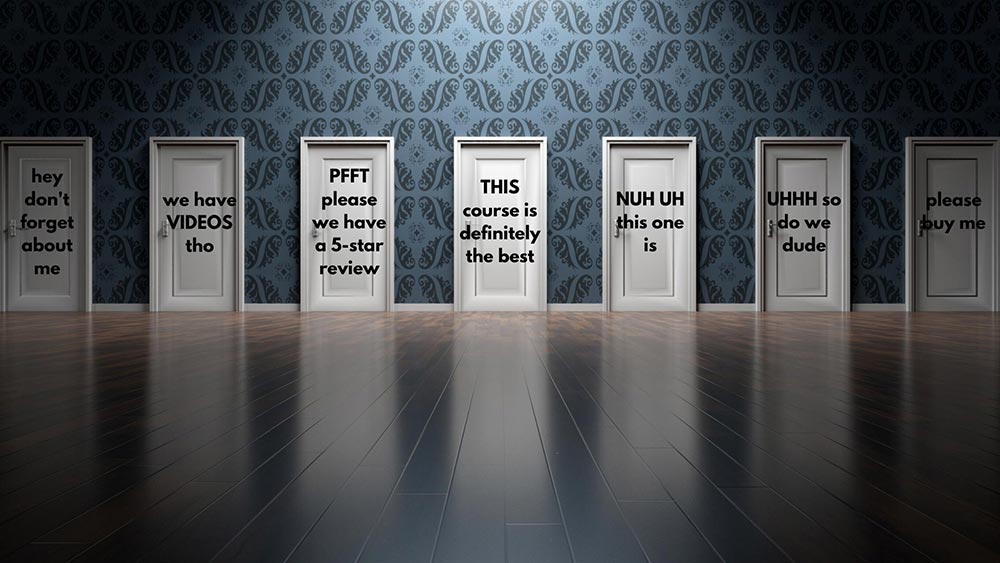
Again, sticking only with what Udemy offers, you now have to choose between 1,627 superbly-rated web design courses.
How do you pick one?
“Well, that’s easy. If they’re all highly-rated, I’ll just pick the cheapest one.” – You, probably.
Yah… OK, go for it.
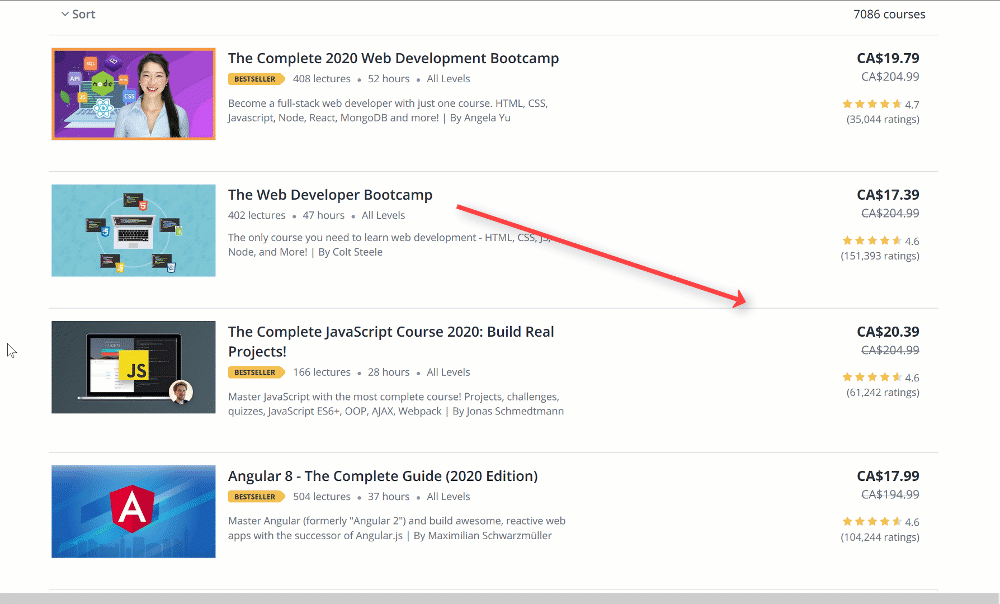
Notice something?
Yep, all of the top web design courses are priced between $15-$25.
“Ah, gotcha. Well, if they’re all highly-rated, and all of them are cheap, then how can I lose? I’ll just close my eyes, spin around 3 times and pin the tail on the web design course!” – You again, probably
Not a bad strategy.
Except for the fact that not all web design courses are created equal.
These are the top 5 web design courses suggested by Udemy:

Can you see what I’m getting at?
With just 5 of the 1,627 top-rated web design courses available on Udemy, we have suggestions to learn:
- Angular 8
- Javascript
- React
- “Complete” Web Development
Do you have any idea what those things are?
Honestly, I’m a web designer, and I don’t even know what Angular is.
Nor do I know how to code with Javascript or React.
In other words, there are many different ways to learn web design. Do you know which path you want to take?
If you’re looking to build your own web design business, I would personally recommend you ignore all of those “top 5” suggestions and instead go with an online CMS like Weebly, Wordpress or Squarespace.
But how can you know which one you should choose? We’ll get into it a little bit later…
But can you see how it’s not nearly as clear cut as you’d expect it to be?
4) All of the information you’ll receive is already available for free
This reason is my favorite one of all.
Why would you pay for something you can get for free?
Do a quick search for “learn web design” on YouTube, and see what you find:
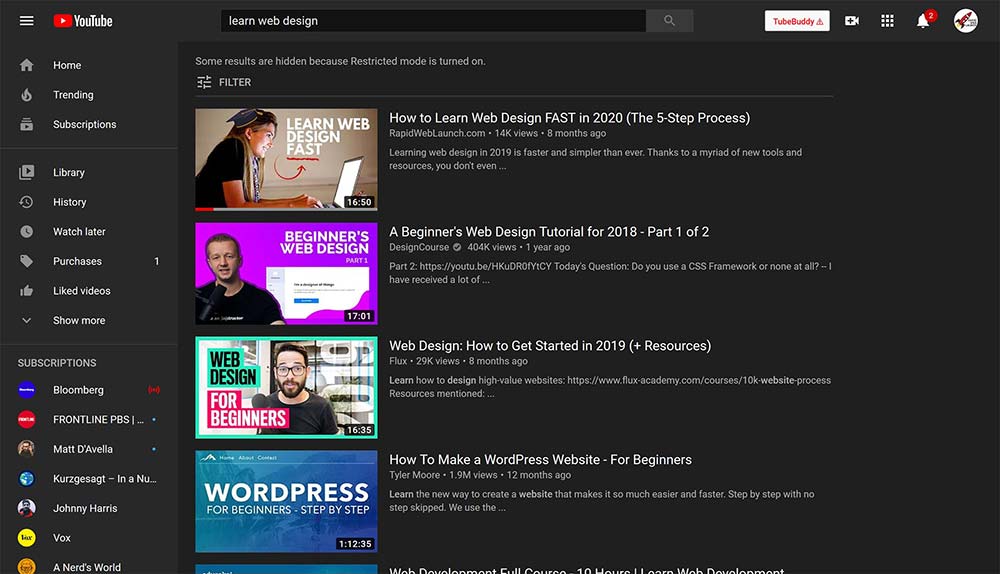
You’ll find thousands of videos and playlists to choose from. All available for free.
(And who’s that handsome fellow listed in the #1 result? ????)
Do a quick Google search for “start a web design business” and find similar results:
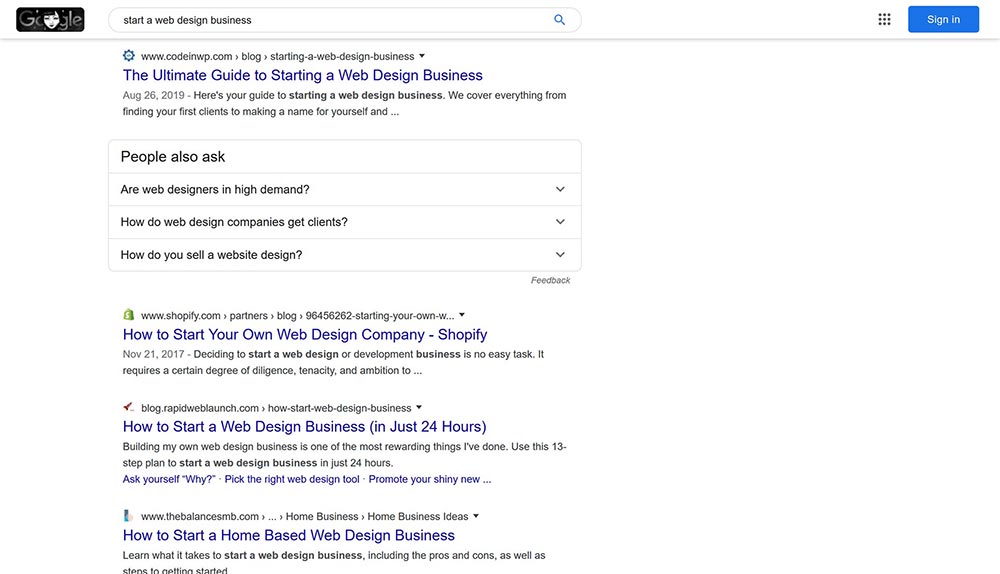
This one will literally pull millions of results for you to choose from.
Oh, look… who’s that in the #3 spot? ???? (used to be #1 before GoDaddy and Shopify got greedy ????)
Look, all cheekiness aside, you can find all of the content you need to learn web design online for free. There’s simply no need to spend your hard-earned cash on paid courses.
I built my entire web design business with the help of others who generously provided free content for me to learn from. Now I’m trying to return the favor.
It’s the beauty of the internet, baby. You can learn anything and everything. For free.
5) Web design courses fail to keep you accountable to ACTION

Here’s the typical journey a wannabe web designer takes:
- “I want to build my own web design business!”
- “I need to learn web design quickly.”
- “People learn things through courses right?”
- *Googles ‘web design courses’*
- *Clicks on top result*
- *Buys the course* “for just $19.99 too!”
- *Receives an email with course login details*
- *Email collects dust in the inbox*
- *Course creator goes for a swim in his pool of cash*
OK, maybe that was unfair to all the course creators out there.
And, to be fair, many course creators are trying to take steps to make their courses more valuable.
Pete McPherson of Do You Even Blog is a good example. He creates some of the best blog posts I’ve ever seen. He also tries to monetize his blog by selling courses.
Awhile ago he recognized that most of his customers weren’t finishing the courses they bought from him. In response, he developed a membership program that would combine high quality courses with personal accountability.
I’m not sure how successful he’s been, but at least he’s trying. (maybe he should be my first guest on the podcast? ????)
But the vast majority of course creators don’t bother. All they care about is making the sale, then stepping back.
The whole point of them developing the course in the first place is so they can do all the work up front, then sit back and watch the money stream in passively.
This is the ultimate disconnect between course-creators and course-takers. And for all the paid memberships available out there, I haven’t found one that solves this fundamental problem.
3 Reasons Web Design Courses Might Be Worth Buying
Now that we’ve discussed reasons why web design courses are NOT worth buying, let’s see if we can find some reasons why they MIGHT be worth buying:
1) You want to feel like you’re accomplishing something rather than putting in the work to accomplish the thing

How many times have you:
- Bought a book and never made it past the second chapter
- Signed up for a gym membership but stopped going after 6 weeks
- Started a new diet regimen but pigged out on Chinese takeout and Haagen Daaz after the first week
Online courses fall into this same category.
You start with great intentions. Wanting to change yourself, learn a new skill or develop a new healthy habit is never a bad thing.
But things quickly start to fall apart once you realize how much persistence and consistence is required to follow through on your ambitious purchase.
But because you are the proud member of an online school that teaches web design skills, it can sometimes feel like you’re making progress when you’re really stuck in a rut.
Kind of like how your gym card dangling from your key chain signals to the world that you are a person who takes physical fitness seriously.
But… is that true? When’s the last time you actually used it?
2) You lack self-discipline and need someone to tell you what to do every day

Developing consistent self-discipline is hard. Especially in this incredibly distracting world we’ve built for ourselves.
But that’s why it’s so important to do it.
Learning how to motivate yourself and focus on what’s most important to you will put you light years ahead of your competition.
Constantly looking for a hand to cling to to help guide you through every step you take in life does nothing for you. You’ll just end up following someone else’s footsteps.
“If you don’t stand for something, you’ll fall for anything.” – Popular Proverb
Guys like Gary Vaynerchuk have built an entire business around the “look at me, listen to me, watch me” marketing model of the social media era. He quite literally puts out hours of content every single day.
And yet, he’s been very clear that he doesn’t take a single minute of his time to consume anyone else’s content. Why?
Well, putting aside the obvious hypocrisy there, he doesn’t spend all of his time reading, watching and listening to other people because he’s busy taking action.
Guys like Gary Vee don’t need constant external motivation. They’re driven by their internal set of values, principles, goals and objectives.
Buying an online web design course is a form of digital hand-holding. It’s an admission that you want someone to plan out every step of your journey for you.
Stuck in a rut? Losing focus? Not sure how to start? By all means, head to YouTube and watch a Gary V motivational video. One. Video.
But then take action. Choose a web design platform. Setup a free website with it. Download that free SEO plugin. Start tinkering with that free online logo maker. (Notice how all of these ideas are free? No excuse not to start!)
The best way to learn is through consistent and deliberate practice.
“Efforts to deepen your focus will struggle if you don’t simultaneously wean your mind from a dependence on distraction.” – Cal Newport (Author)
Don’t let a good thing (consuming quality, informational, actionable content) become a distraction.
Obsessing over which online web design courses you should take is a distraction.
3) You love to tell your friends about all of the “smart” purchases you make

Cultivating personal growth and learning new skills is fulfilling.
Naturally, you want to tell others about it.
While everyone else is chatting about the latest Netflix series and what Justin Bieber posted on Instagram last night, you can casually bring up how you’re “taking a course on web design”.
“Ooooo a course eh? Look atchu!” – Your friends
I mean, it sounds a lot cooler than saying:
“I’m watching some guy’s YouTube videos that are mainly made up of generic stock video, corny animations and culturally irrelevant GIFs.”
“Ohhhh… that’s cool…” – Your friends, significantly less impressed
(Don’t forget to subscribe. lolz)
But again, this comes back to the issue of feeling accomplished vs actually accomplishing things.
I once joined a band without knowing how to play a single instrument. My friends needed someone to play some basic keyboard rhythms and were willing to teach me everything I needed to know for each song.
Was I able to call myself a musician? Absolutely not.
Did that stop me from telling people I was in a band? Absolutely not.
The feeling was there. The skills were not.
I have yet to learn how to play a musical instrument. But I can definitely say I was in a band for a couple of years. ????
What you can do instead of buying web design courses
So… in case you couldn’t tell… all of the reasons I gave why web design courses MIGHT be worth buying are really just three more reasons why you DON’T need to buy web design courses.
I know, it was a bit heavy handed.
But it was effective, right?…
Ultimately, it’s good news for you! It means you don’t need to invest your hard-earned cash into yet another expensive tool or resource.
It means that, if you really want to learn web design, all you need are things like:
- Clearly defined goals
- Focus
- Self-discipline
- Priorities
- Persistence
- A good internet connection
Then, follow this simple 5-step process:
- Pick a web design tool
- Consume all of the free content you need about that tool
- Choose a web design niche
- Practice, practice, practice
- Sell yourself as an expert of that tool/niche
It’s why I never plan on developing and selling courses myself.
It wouldn’t feel right to me. I learned how to build a successful web design business without them, so how can I give you a different message?
And, frankly, it is far more difficult to develop the things I mentioned in that list. It’s why so few people bother doing it.
You know what’s easier? And will make you feel like you’re being productive without actually producing anything?
Buying a web design course.





